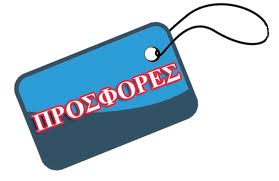 Flavor Chemistry of Wine and Other Alcoholic Beverages
Flavor Chemistry of Wine and Other Alcoholic Beverages
Flavor Chemistry of Wine and Other Alcoholic Beverages
Συγγραφέας: Michael Qian, Thomas H. Shellhammer
ISBN: 9780841227903
Σελίδες: 368
Σχήμα: 16 Χ 23
Εξώφυλλο: Σκληρό
Έτος έκδοσης: 2014
• Describes the advances in flavor chemistry with respect to alcoholic beverages.
Aroma is one of the most important quality attributes for wine and many other alcoholic beverages. However, the chemical composition of most alcoholic beverages is so complex that it has always been a challenge for scientists to fully understand their flavor chemistry. The low concentration of key aroma compounds, such as thiols, the low sensory threshold of many important contributors to aroma and the interfering alcohol matrix make the accurate analysis extremely challenging. With the advance of analytcial instrumentation, particularly the greater accessibility of LC-MS, new insights about the flavor and flavor precursors in wine and alcoholic beverages has been achieved.
This book is derived from the American Chemical Society symposium <"Flavor Chemistry of Alcoholic Beverages>" held on August 22-26, 2010, in Boston, MA, with the purpose of sharing new information on the flavor chemistry of wine, beer, and other other alcoholic berverages. Participants of this symposium were scientists from both the academic and industrial scientific communities. A section of this book is devoted to the flavor and flavor precursors in wine grapes and their conversion in wine. This aspect is important because the origin of many unique aromas found in wine can be sourced directly to wine grapes. Since these aroma and aroma precursors are the secondary metabolites of plants, their biotransformation and accumulation are directly inflenced by environment and viticultural practice in the vineyeard.
Another significant portion focuses on aging processes during wine production. Aging is a dynamic process involving both volatile and nonvolatile compounds. During this process some compounds degrade, whereas other compounds form. Understanding these processes are of economic importance, particularly for wine since aging can be such a critical step in its production.
This symposium book is a unique volume that describes the advances in flavor chemistry research related to alcoholic beverages. It will be an excellent reference book for all scientists and professionals engaging in the research and development in the field of food and beverage flavoring and flavor ingredients.
Readership: Academics and professionals working is food chemistry
Table of Contents
Preface
Analytical
1. Spice Up Your Life: Analysis of Key Aroma Compounds in Shiraz
M. J. Herderich, T. E. Siebert, M. Parker, D. L. Capone, D. W. Jeffery, P. Osidacz, and I. L. Francis
2. Analytical Investigations of Wine Odorant 3-Mercaptohexan-1-ol and Its Precursors
Dimitra L. Capone, Mark A. Sefton, and David W. Jeffery
3. Streamlined Analysis of Potent Odorants in Distilled Alcoholic Beverages: The Case of Tequila
Jacob Lahne and Keith Cadwallader
Flavor Chemistry of Wine and Wine Grape
4. Assessing Smoke Taint in Grapes and Wine
Kerry L. Wilkinson, Kerry A. Pinchbeck, Renata Ristic, Gayle A. Baldock, and Yoji Hayasaka
5. Smoke Taint Aroma Assessment in 2008 California Grape Harvest
Hui Hui Chong and Michael T. Cleary
6. Development of C6 and Other Volatile Compounds in Pinot Noir Grapes Determined by Stir Bar Sorptive Extraction-GC-MS
Yu Fang and Michael C. Qian
7. Accumulation of C13-Norisoprenoids and Other Aroma Volatiles in Glycoconjugate Form During the Development of Pinot Noir Grapes
Yu Fang and Michael C. Qian
8. Evaluation of the Impact of an Archaic Protocol on White Wine Free Aroma Compounds
Bruno Fedrizzi, Giuseppe Versini, Fabio Finato, Enrico M. Casarotti, Enrico Nicolis, and Roberto Ferrarini
9. Wine of Northwest China and Its Aroma Research Progress: A Review
Hua Wang and Hua Li
Wine Oxidation and Aging
10. Wine Oxidation: Recent Revelations, Observations, and Predictions
Andrew L. Waterhouse
11. Impact of the Oxygen Exposure during Bottling and Oxygen Barrier Properties of Different Closures on Wine Quality during Post-Bottling
Paulo Lopes, Maria A. Silva, Alexandre Pons, Takatoshi Tominaga, Valérie Lavigne, Cédric Saucier, Philippe Darriet, Miguel Cabral, Pierre-Louis Teissedre, and Denis Dubourdieu
12. Fermentation and Post-Fermentation Factors Affecting Odor-Active Sulfur Compounds during Wine Bottle Storage
Maurizio Ugliano, Paul A. Henschke, and Elizabeth J. Waters
Flavor Chemistry of Beer and Hop
13. The Effect of Pellet Processing and Exposure Time on Dry Hop Aroma Extraction
Peter Wolfe, Michael C. Qian, and Thomas H. Shellhammer
14. HPLC-ESI-MS Identification of Hop-Derived Polyphenols That Contribute Antioxidant Capacity and Flavor Potential to Beer
Patricia M. Aron, Patrick L. Ting, and Thomas H. Shellhammer
Flavor Chemistry of Other Alcoholic Beverages
15. Tequila Processing and Flavor
Pedro A. Vazquez-Landaverde and Miriam G. Rodriguez-Olvera
16. Characteristic Aroma Compounds of Chinese Dry Rice Wine by Gas Chromatography-Olfactometry and Gas Chromatography-Mass Spectrometry
Wenlai Fan and Yan Xu
17. Identification of Aroma Compounds in Chinese <"Moutai>" and <"Langjiu>" Liquors by Normal Phase Liquid Chromatography Fractionation Followed by Gas Chromatography/Olfactometry
Wenlai Fan, Yan Xu, and Michael C. Qian
Editors>' Biographies
Indexes
Author Index
Subject Index






